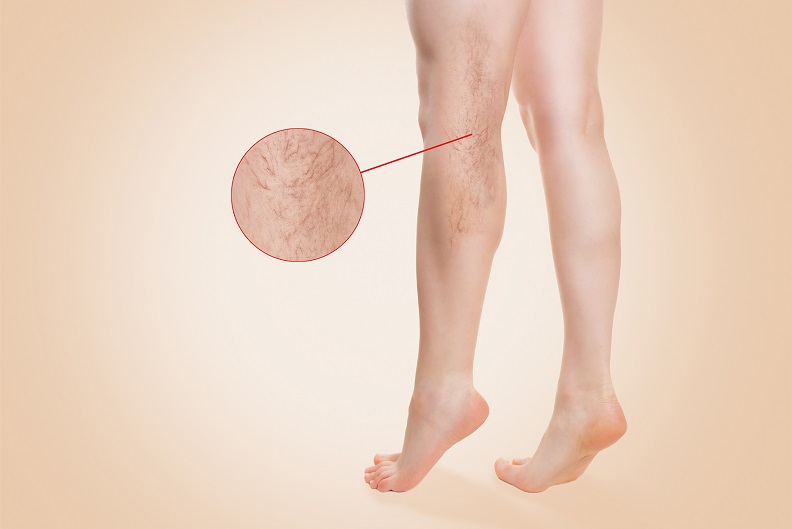Telangiectasia (capillary vessel vasolidatation) may be observed in whole body but most frequently seen on face and legs.
Which factors cause Telangiectasia?
Genetic factors and sun lights cause capillary condensation on face while genetic factors, long-term standing and pregnancy may cause deterioration in capillary structure and telangiectasia on legs.
What problems does Telangiectasia cause?
Telangiectasia may cause cosmetic problems in legs and may cause pains and aches during walking and standing.
Capillary vessel condensation on face may both cause cosmetic problems and also trigger the formation of acne rosacea.
How capillary vessel treatment administered?
In treatment of Telangiectasia, KTP laser, Nd-Yag Laser, PDLaser and IPL may be used.
It is significant to adjust appropriate dosage and laser beam duration according to the width and depth of the vessel.
With laser treatment, especially near-surface vessels (1-2 mm depth, <2mm diameter) may be treated effectively.
To ensure long-term efficiency, deeply located vessels feeding near-surface vessels should also be treated.
Is capillary vessel treatment with laser painful?
Patients may feel some paid during capillary vessel treatment with laser, so cold air is applied during treatment. The sense of pain disappears immediately after the treatment.
How is recovery after capillary vessel treatment?
Redness, swelling, dropsy and peeling may be observed following the treatment. The recovery after treatment may take up to 3 weeks. Repair creams are used during recovery period. The disappearance of the treated vessels on legs may take longer periods of time.
There may occur brown or white spots after recovery. There is no risk for allergic reaction.
Number of sessions varies from person to person, however mostly 2 sessions are enough. The duration between sessions should be minimum 8 weeks.
Capillary vessel treatment with laser is performed during autumn and winter months.
Vessel treatment with laser is an efficient and a safe method which may be applied for those who don’t prefer sclerotherapy due to needle phobia, who have condensed surface vessels and for the treatment of vessels which couldn’t be treated with sclerotherapy.







Yorumlar kapalı.